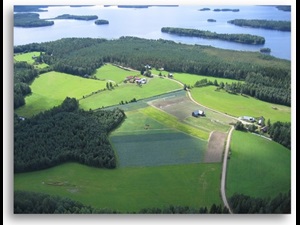Connecticut's Coastal Nonpoint Source
Pollution Control Program
Agriculture
The primary agricultural nonpoint source pollutants are nutrients (particularly nitrogen and phosphorus), sediment, animal wastes, pesticides and salts. These pollutants enter watercourses through direct surface runoff or through seepage to ground water that discharges to surface water. The most common sources of excess nonpoint source nutrients in surface water are chemical fertilizers and manure from animal facilities. Such nutrients in high concentrations stimulate blooms of algae in surface waters.
The agriculture management measures that are addressed by Connecticut’s coastal nonpoint source pollution control program pertain to nutrient management and confined animal facilities. A confined animal facility is a lot or facility where non-aquatic animals are held and fed for at least 45 days per year, and which is not also used for agricultural production.
Key Concepts
1. Confined Animal Facilities
- Limit discharges by storing wastewater and runoff caused by storms.
- Manage stored runoff and solids through proper use of waste and disposal methods that minimize impacts to surface water and/or groundwater.
- Collects solids and reduce contaminant concentrations, and reduce runoff to minimize the discharge of contaminants in both facility wastewater and runoff caused by all storms up to and including 25-year, 24-hour frequency storms.
2. Nutrient Management
-
Develop and implement comprehensive nutrient management plans, including:
- nutrient budgets for crops,
- identification of the types and amount of nutrients necessary to produce a crop based on realistic crop yield expectations, and
- identification of the environmental hazards of the site.
- Conduct soil tests and other tests to determine crop nutrient needs and proper calibration of nutrient application equipment.
Content Last Updated on February 28, 2020

